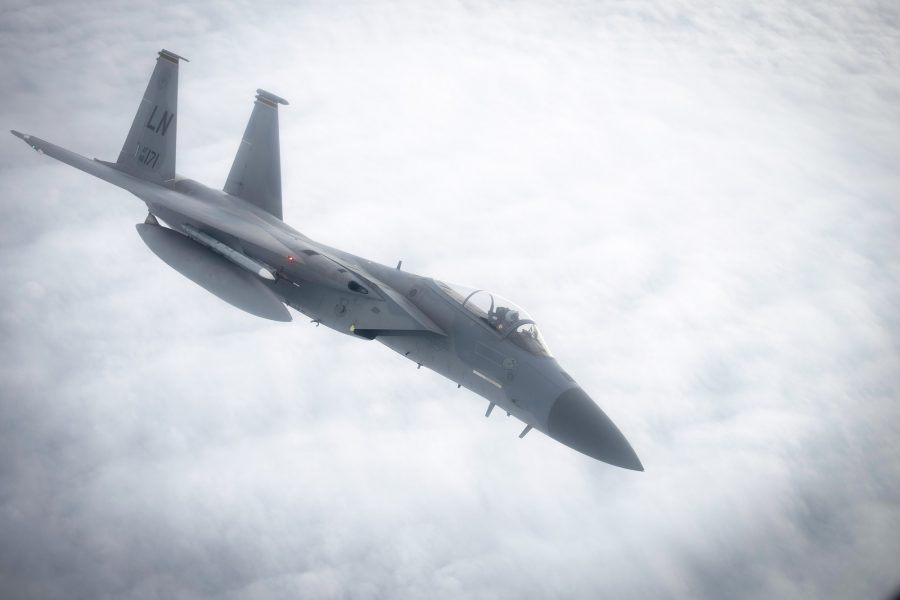The F-15 Eagle was the world’s dominant, supersonic, all-weather, day/night air-superiority fighter for more than 40 years.
The F-15A first flew on July 27, 1972, and F-15A/Bs were delivered between 1974 and 1979, attaining IOC in September 1975. F-15C/Ds began replacing F-15A/Bs in 1979, offering superior maneuverability, acceleration, range, weapons, and avionics. F-15s accounted for 34 of USAF’s 37 air-to-air kills during Desert Storm.
The C/D added EW countermeasures and 2,000 lb of internal fuel and the final 43 production aircraft received the F-15E’s APG-70 radar and Multi-Stage Improvement Program (MSIP). USAF received the first APG63(V)3 AESA-modified F-15 in 2010, but comprehensive modernization, including the Eagle Passive/Active Warning Survivability System (EPAWSS) was canceled with the decision to replace the fleet with the new-build F15EX. USAF also reduced the number of MIDS/JTRS secure high-capacity comm and networking upgrades and limited SLEP to 63 airframes.
The majority of F-15C/D's suffer performance-limiting structural issues and USAF requested to retire 65 aircraft in FY25. Congress limited reduction to 36 aircraft but added funds to accelerate replacement with F-15EX in response to ANG requests.
Kadena completed its F-15C/D drawdown in December 2024, and USAF is backfilling with rotational fighters until the planned permanent basing of 36 F-15EXs as soon as 2026.
F-15 Eagle Technical Data
Contractors: Boeing (previously McDonnell Douglas).
First Flight: Feb. 26, 1979 (F-15C).
Delivered: 1979-85 (F-15C/D).
IOC: 1979 (F-15C/D).
Production: 874.
Inventory: 108 (F-15C); 8 (F-15D)
Operator: AFMC, PACAF, ANG.
Aircraft Location: Barnes Arpt., Mass.; Fresno ANGB, Calif.; Jacksonville Arpt., Fla.; Kadena AB, Japan; Klamath Falls (Kingsley Field), Ore.; NAS JRB New Orleans, La.; Portland Arpt., Ore.
Active Variant: •F-15C. Upgraded version of the single-seat F-15A. •F-15D. Upgraded version of the two-seat F-15B.
Dimensions: Span 42.8 ft, length 63.8 ft, height 18.7 ft.
Weight: Max T-O 68,000 lb.
Power Plant: Two Pratt & Whitney F100-PW-220 turbofan engines, each 23,450 lb thrust; or two P&W F100-PW-229 turbofan engines with afterburners, each 29,000 lb thrust.
Performance: Speed Mach 2.5, ferry range 2,878 miles (3,450 miles with CFTs and three external tanks; further with air refueling).
Ceiling: 60,000 ft.
Armament: One internally mounted M61A1 20 mm six-barrel cannon (940 rd); four AIM-9 Sidewinders and four AIM-120 AMRAAMs, or eight AIM-120s; in a one-time test, an Eagle successfully launched an anti-satellite missile.
Accommodation: Pilot (C); two pilots (D), on ACES II zero/zero ejection seats.


